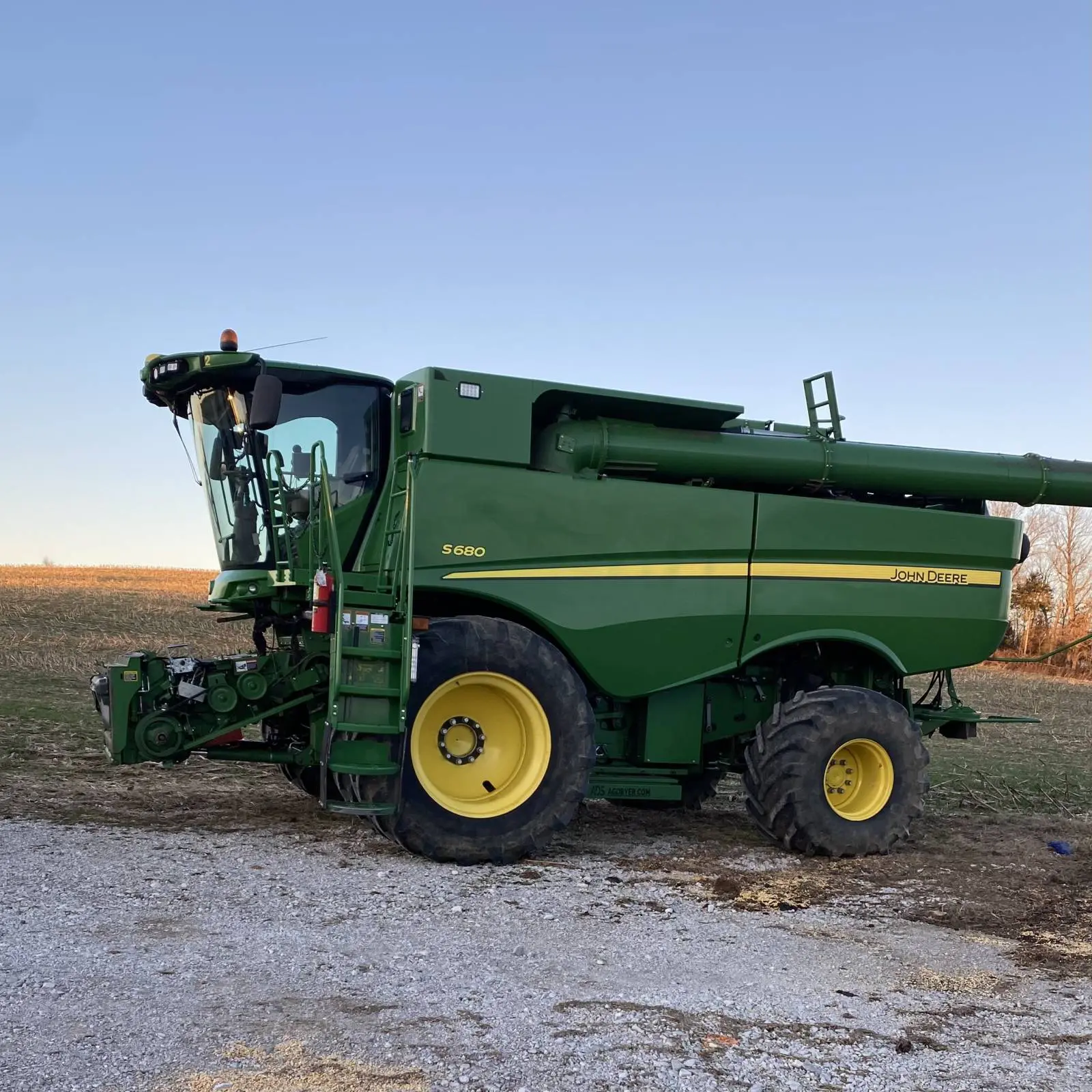 It was a long, wet fall. Rain continued to slow soybean harvest. We finally finished cutting soybeans on November 30. In our area of the southern U.S., we received another 7.5 cm, or about 3 inches, of rain just a few days later. Many other farmers still have fields to harvest.
It was a long, wet fall. Rain continued to slow soybean harvest. We finally finished cutting soybeans on November 30. In our area of the southern U.S., we received another 7.5 cm, or about 3 inches, of rain just a few days later. Many other farmers still have fields to harvest.
Harvesting the last of our soybeans marked the end of a very long growing season. Like every year, this one was a little different. The end results were good, but the season was not without issues like weather and supply chain problems along the way. Last spring, wet weather impacted field preparation and fertilizing wheat and forced long hours planting corn. Continuing cool, wet weather slowed winter wheat development and corn emergence. Despite delays, we still managed to harvest wheat and plant double-crop soybeans by the end of June. Late summer brought dry weather and pests, before we started corn harvest in September. The return of wet weather delayed fall fieldwork like planting wheat and cover crops along with corn harvest. Double-crop soybean harvest also started late. As you can see, 2021 wore us out.
We are very thankful to be done with harvest and for good crops that we are selling at good prices. With fieldwork finished for the year, we have started selling the corn we don’t need to feed our pigs. We are using our semitrucks to haul it to a feed mill where it will eventually become chicken feed. We have also been cleaning and repairing our equipment and working on end-of-the-year bookwork. And, I have been attending industry meetings. In fact, I was recently elected to serve as the secretary for the American Soybean Association for the next year.
 Now, our focus has turned to planning for 2022, which brings lots of uncertainties. We try to be proactive rather than reactive to potential challenges, like expected supply chain problems with crop inputs. We have already applied the phosphorus and potassium fertilizer our crops will need next year. And, we already have many of the crop protection inputs like herbicides and fungicides on hand.
Now, our focus has turned to planning for 2022, which brings lots of uncertainties. We try to be proactive rather than reactive to potential challenges, like expected supply chain problems with crop inputs. We have already applied the phosphorus and potassium fertilizer our crops will need next year. And, we already have many of the crop protection inputs like herbicides and fungicides on hand.
The winter wheat looks like it has gotten a good start. It stands anywhere from 2 to 10 cm tall, or between 1 and 4 inches, depending on when it was planted. The weather has been mild enough that it is growing now, but we expect that the weather will soon be cold enough that the wheat will go dormant. It typically warms up enough to bring the crop out of dormancy in February or March.
We still need to source nitrogen fertilizer for our winter wheat and corn next season. We rely on manure from our pigs to supply nitrogen for some fields. We follow a nutrient management plan and inject liquid manure from our barns into the soil, deep enough that it will stay in place and be available for crops when they need it. In the fall, we pump and apply enough manure to ensure that we will have plenty of waste storage capacity for the winter. This year, we found time to apply some manure to some ground that will be planted to corn right before we planted cover crops. Next spring, we will empty all our manure storage capacity to fertilize additional corn fields before planting. However, this provides only a portion of the total nitrogen we need, and we expect high prices next spring.
 Whatever the challenges, we will do our best to grow high-quality products in the most sustainable manner possible, like we do every year. Thank you for following along with our work at Shady Rest Farm throughout 2021. Our efforts reinforce that customers can buy U.S. soy and other commodities with confidence.
Whatever the challenges, we will do our best to grow high-quality products in the most sustainable manner possible, like we do every year. Thank you for following along with our work at Shady Rest Farm throughout 2021. Our efforts reinforce that customers can buy U.S. soy and other commodities with confidence.
This field update is funded by the soybean checkoff. To share or republish part or all of this Ground Work 2021 article, please link to the original article and credit www.USSOY.org.

